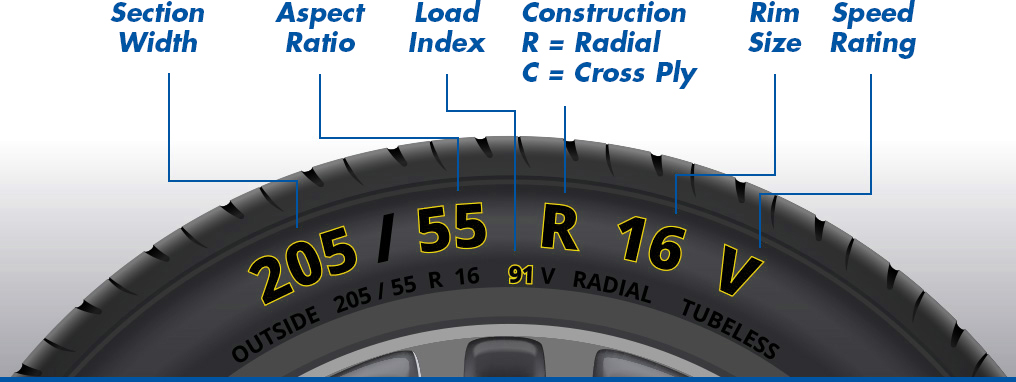
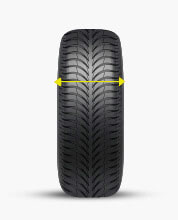
The nominal section width of the tyre in millimetres
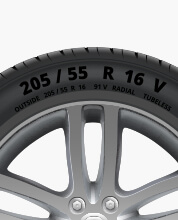
The ratio of the height to width in percentage.
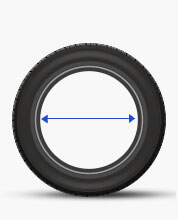
This is the diameter of the tyre’s inner rin in inches.
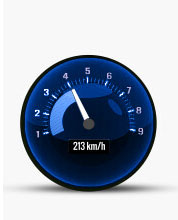
Indicates the maximum speed for the tyre at full the load.
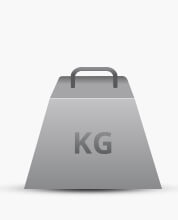
Maximum load carrying capacity of the tyre.
Radial is a specific design of tyre where the sidewall and tread functions as two independent features. The layers run radially across the tyre. Advantages of radial tyres include flexible sidewalls, reduced fuel consumption due to less rolling resistance and a softer ride due to layout of the tyre’s plies as well as the flex in the sidewalls.
Tyre manufacturers use their own system for marking run flat tyres, resulting in different abbreviations appearing on the tyre’s sidewall, depending on the tyre brand.
Tubeless refers to ‘run flat’ tyres. Normally a car is supported by the air in the tyres where the tyre collapses when punctured. Run flat tyres have reinforced sidewalls which temporarily hold up the weight of your vehicle when getting a puncture. This allows the vehicle to drive on the flat tyre in order to get to a place of safety or your nearest fitment centre. The distance and maximum speed you are able to drive on a flat tubeless tyre depends on the tyre brand and tread pattern.